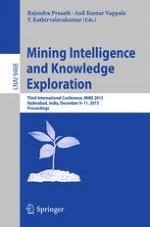This book constitutes the refereed proceedings of the Third International Conference on Mining Intelligence and Knowledge Exploration, MIKE 2015, held in Hyderabad, India, in December 2015.
The 48 full papers and 8 short papers presented together with 4 doctoral consortium papers were carefully reviewed and selected from 185 submissions. The papers cover a wide range of topics including information retrieval, machine learning, pattern recognition, knowledge discovery, classification, clustering, image processing, network security, speech processing, natural language processing, language, cognition and computation, fuzzy sets, and business intelligence.
